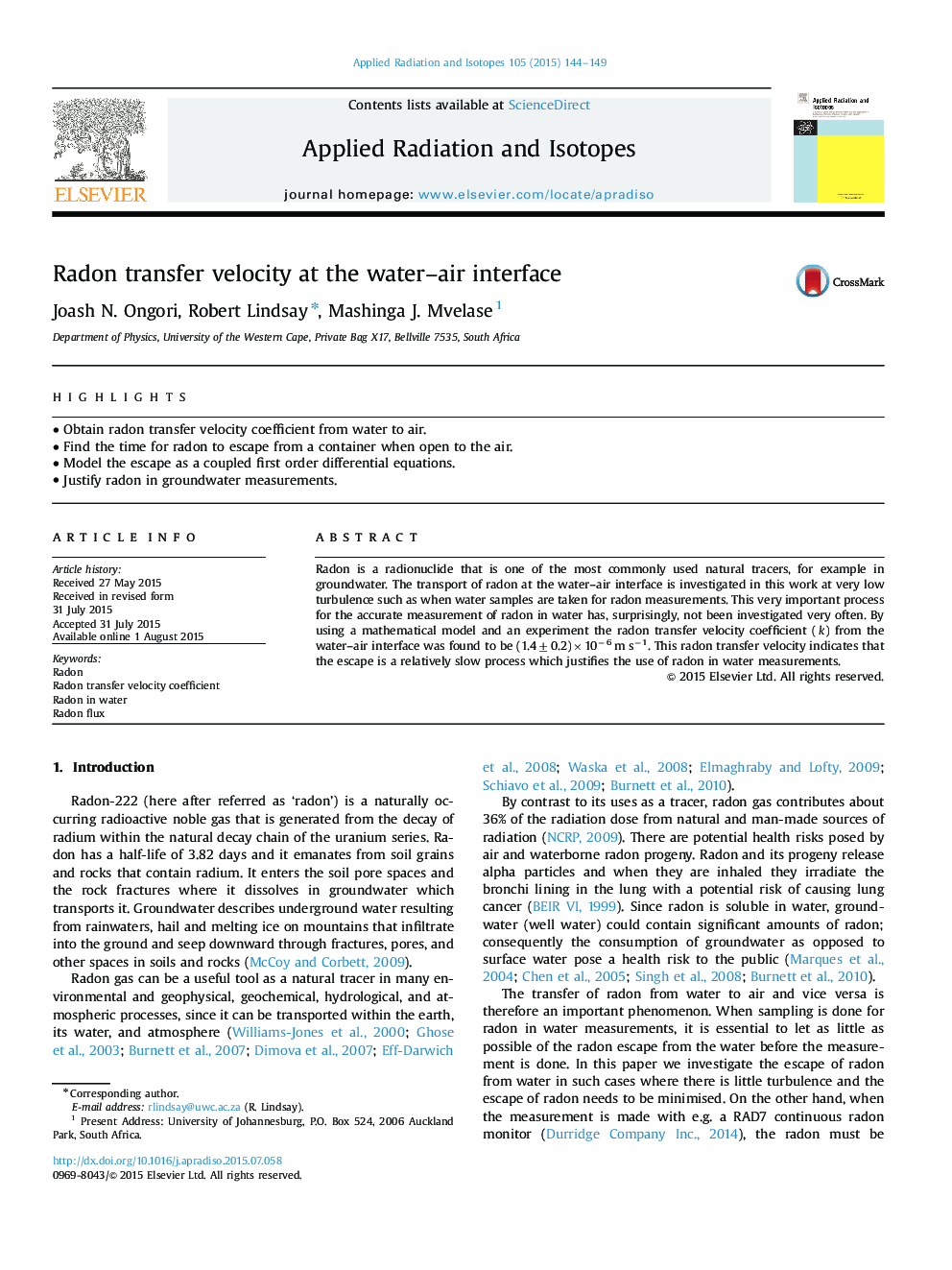| Article ID | Journal | Published Year | Pages | File Type |
|---|---|---|---|---|
| 1875823 | Applied Radiation and Isotopes | 2015 | 6 Pages |
•Obtain radon transfer velocity coefficient from water to air.•Find the time for radon to escape from a container when open to the air.•Model the escape as a coupled first order differential equations.•Justify radon in groundwater measurements.
Radon is a radionuclide that is one of the most commonly used natural tracers, for example in groundwater. The transport of radon at the water–air interface is investigated in this work at very low turbulence such as when water samples are taken for radon measurements. This very important process for the accurate measurement of radon in water has, surprisingly, not been investigated very often. By using a mathematical model and an experiment the radon transfer velocity coefficient (kk) from the water–air interface was found to be (1.4±0.2)×10−6 m s−1. This radon transfer velocity indicates that the escape is a relatively slow process which justifies the use of radon in water measurements.
